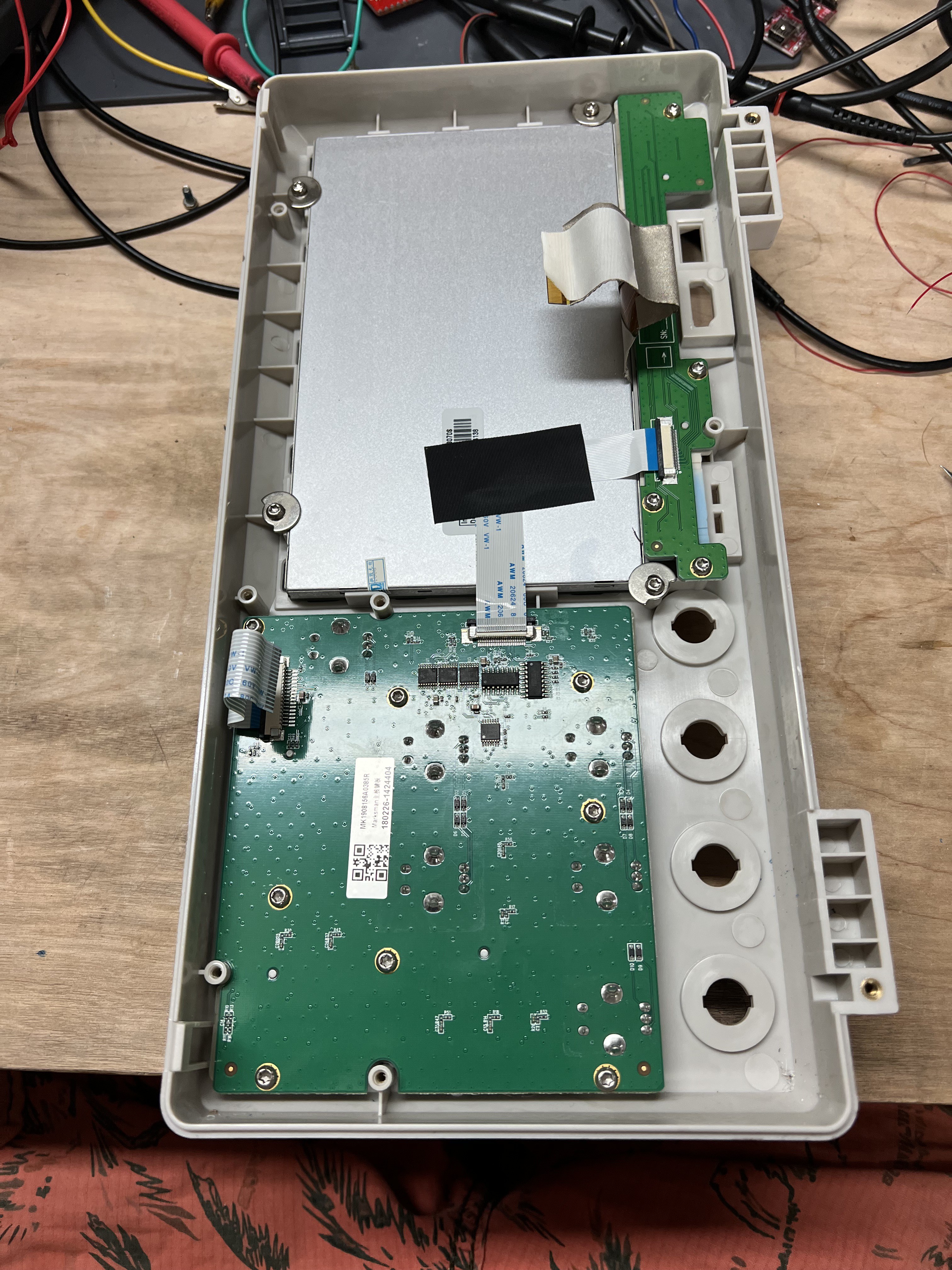This is more of a sub-hack which ultimately was due to me crossing some USB D+ and D- lines on another project, breadWare (now called Jumperless.) This hack didn't actually help solve that problem but it's pretty nifty to have.
I was troubleshooting an issue where it was only sending the first 3 characters over USB after a reset. So I kept having to press the single trigger button on my Siglent SDS1104X-E every time I reset to see if I could find any obvious problems.
When I finally figured it out by looking at the schematic, it was kind of amazing that it sent anything at all with the data lines crossed like that. Or it could have been totally fine (being differential signals), I guess maybe it has something to do with how USB syncs clock speeds or something.
Here are some pics of my oscilloscope's guts.





The wires are together like that because they fit in a channel (I imagine it's to let air escape when you press it) on the back of the rubber button thing.

Those red wires above connect to 2 leads on this audio jack.


Heft, it's what hackers crave.


While I was reassembling it, I saw the ethernet jack on the back which reminded me that this thing totally has a web interface and I could have just used that. But personally, doing things with hardware is so much more rewarding.
 Kevin Santo Cappuccio
Kevin Santo Cappuccio


 danjovic
danjovic


 lion mclionhead
lion mclionhead
Like your idea, but my scope has an a external trigger port, what do I need to make to work with a pushbutton switch like yours? (I would like to make a foot-switch also, so I can use my other hand for something else). I think it needs some kind of 3.3/5V signal that would trigger it - right? It can't just be a "short" between ground and center pin of the BNC? Thanks!